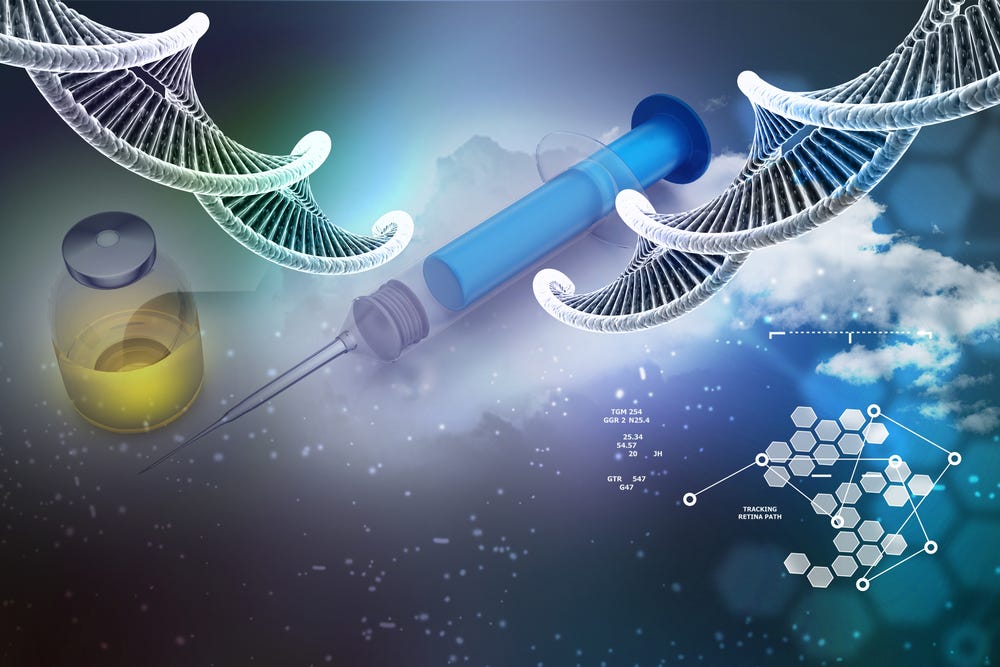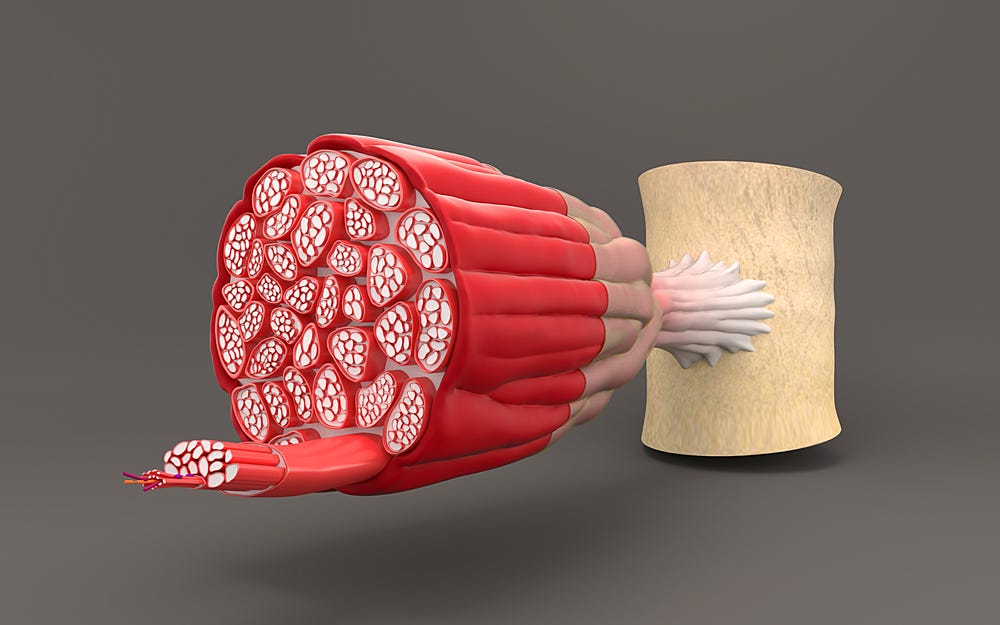Jason Hope
Founder of Jason Hope Business Consulting
Hope invests in college undergraduate tech ideas. If you have an innovative idea to pitch for angel investing, submit your idea at jasonhope.com. Jason Hope will work with you to put your idea into motion.
 medium.com/@jason.hope?source=rss-29f4cc5f5ed1------2
medium.com/@jason.hope?source=rss-29f4cc5f5ed1------2

The Internet of Things (IoT) has transformed the way we interact with our surroundings, from smart homes to connected cars. As the IoT ecosystem continues to expand, the need for robust security measures becomes paramount.
One often-overlooked aspect of IoT security is the role of Subscriber Identity Module (SIM) cards. Traditionally associated with mobile phones, SIM cards play a crucial role in enhancing the security of IoT devices.
In this article, we will explore the significance of SIM cards in fortifying the IoT landscape and how they contribute to safeguarding sensitive data and ensuring the integrity of connected systems.
SIM Cards and Device Authentication
Device authentication is a cornerstone of IoT security, and SIM cards serve as a powerful tool in this regard. SIM cards are equipped with unique identifiers, including an International Mobile Subscriber Identity (IMSI) and a unique authentication key.
These identifiers play a pivotal role in validating the identity of IoT devices on a network. When a device attempts to connect to a network, the SIM card’s IMSI is used to authenticate the device, ensuring that only authorized devices gain access.
This two-factor authentication mechanism adds an extra layer of security, mitigating the risk of unauthorized access and potential cyber-attacks.
Secure Communication with SIM-based Encryption
Ensuring secure communication between IoT devices and the central network is essential for safeguarding sensitive data. SIM cards contribute to this aspect through the implementation of encryption protocols.
Advanced SIM cards, such as embedded SIMs (eSIMs), utilize industry-standard encryption algorithms to secure data transmission. This not only protects the confidentiality of the data being exchanged but also prevents malicious actors from intercepting or tampering with the communication.
As IoT devices often handle sensitive information, such as personal and financial data, the use of SIM-based encryption is instrumental in maintaining the privacy and integrity of the transmitted data.
Remote Management and Updates
IoT devices are distributed across diverse locations, making manual management and updates challenging. SIM cards facilitate remote management of IoT devices, allowing for seamless updates and patches.
Through Over-The-Air (OTA) updates, security vulnerabilities can be addressed promptly, reducing the window of opportunity for potential cyber threats.
SIM cards enable efficient device monitoring, allowing organizations to track the health and status of their IoT devices in real-time. This proactive approach to device management enhances overall security, ensuring that devices remain resilient against emerging threats.
Challenges and Future Developments
While SIM cards play a crucial role in enhancing IoT security, challenges persist. One challenge is the potential susceptibility of traditional SIM cards to physical tampering.
To address this, the industry is actively exploring the adoption of eSIMs, which are embedded directly into the device’s hardware, making them more resistant to tampering. Moreover, the evolving landscape of IoT and the increasing number of connected devices pose ongoing security challenges.
Future developments may include the integration of advanced biometric authentication methods into SIM cards and the exploration of blockchain technology for enhancing the overall integrity and traceability of IoT transactions.
Scalability and Standardization
As the IoT ecosystem expands, scalability becomes a critical consideration for device manufacturers and service providers. SIM cards contribute to scalability by providing a standardized and interoperable authentication framework.
The use of SIM cards ensures that devices from various manufacturers can seamlessly connect to networks globally, fostering a more robust and universally accepted security model. Standardization also enables a more straightforward integration process for IoT devices, reducing the complexity of security implementations.
This not only accelerates the deployment of IoT solutions but also creates a more cohesive and secure environment for the multitude of interconnected devices that make up the IoT landscape.
Cost-Effective Security Solutions
Effective security measures often come with the concern of increased costs, especially in large-scale IoT deployments. SIM cards, however, present a cost-effective solution for bolstering device security.
With their widespread use in mobile communication, SIM cards benefit from economies of scale, making them an affordable security option for IoT devices. Moreover, the long-standing presence of SIM card technology in the telecommunications industry has led to continuous advancements, providing a mature and reliable security infrastructure.
This cost-effectiveness makes SIM cards an attractive choice for both small-scale IoT projects and large-scale industrial deployments, contributing to the accessibility and widespread adoption of secure IoT solutions.
Conclusion
The security of IoT devices is paramount in an interconnected world. SIM cards, often underestimated in their role beyond mobile phones, emerge as key guardians of IoT security. From device authentication to secure communication and remote management, SIM cards contribute significantly to fortifying the IoT landscape.
As technology continues to advance, the integration of robust security measures, including innovations in SIM card technology, will be essential to ensure the continued growth and sustainability of the Internet of Things.

While LDL is commonly associated with cardiovascular health, recent research has ignited curiosity about its potential impact on the biological clock. LDL, often labeled as the “bad cholesterol,” has been a focal point in cardiovascular health, but its potential impact on the aging process goes beyond conventional perspectives.
In this article, we unravel the complex interplay between LDL levels and the epigenetic processes that govern aging.
LDL and the Foundations of Aging: A Brief Primer
Before we explore the connection between LDL and the epigenetic pace of aging, let’s establish a foundation. LDL, often referred to as “bad cholesterol,” is a lipid-carrying protein that plays a crucial role in transporting cholesterol throughout the body. Elevated levels of LDL are traditionally linked to an increased risk of cardiovascular diseases.
However, recent studies suggest that its influence may extend beyond the cardiovascular realm, reaching into the intricate mechanisms that regulate aging at the molecular level.
The Epigenetic Landscape of Aging Signals
To comprehend the potential impact of LDL on the epigenetic pace of aging, it’s imperative to understand the concept of epigenetics. Epigenetics refers to changes in gene expression that do not involve alterations to the underlying DNA sequence.
These modifications can be influenced by various factors, including lifestyle, environment, and, as emerging research suggests, potentially cholesterol levels. The epigenetic landscape is like a symphony of signals that orchestrate the aging process, and cholesterol might be playing a previously unnoticed tune.
Low LDL: A Brake on the Epigenetic Accelerator?
Now, let’s address the question at hand — is low LDL bad for the epigenetic pace of aging? Some intriguing studies propose that low levels of LDL could act as a brake on the epigenetic accelerator, potentially slowing down the aging process.
These studies speculate that certain cholesterol-lowering medications or diets could influence the epigenetic machinery, affecting how our genes are expressed and, consequently, impacting the pace at which our bodies age.
However, it’s crucial to approach these findings with cautious optimism, as the intricate web of factors influencing aging is still being unraveled by scientists.
Mechanisms Behind Low LDL’s Influence on Epigenetic Aging
Research suggests that low LDL levels may affect the epigenetic pace of aging through various mechanisms. One key player is DNA methylation, a process where methyl groups are added to DNA, influencing gene activity.
Preliminary studies indicate that low LDL levels might modulate the DNA methylation patterns associated with aging-related genes. Additionally, histone modifications, another epigenetic mechanism, could be influenced by LDL, further shaping the aging process at the molecular level.
Lifestyle Factors and their Role in Modulating LDL Levels and Aging
While examining the connection between low LDL and the epigenetic pace of aging, it’s imperative to acknowledge the influence of lifestyle factors. Diet, exercise, and overall health habits contribute significantly to LDL levels and, subsequently, the aging process.
Adopting a heart-healthy lifestyle, including a balanced diet and regular physical activity, can positively impact LDL levels, potentially influencing the epigenetic mechanisms associated with aging.
Understanding and promoting these lifestyle factors can serve as a complementary approach to managing both cardiovascular health and the aging trajectory.
What’s To Come In The Next 5 Years?
As we navigate through this evolving field of research, it’s essential to consider the broader implications. While the connection between low LDL and the epigenetic pace of aging is a captivating avenue, it’s not a green light to abandon established cardiovascular health guidelines.
Maintaining optimal LDL levels is undeniably critical for heart health, and any potential benefits on the epigenetic front should be approached with a balanced perspective.
The Takeaway
The interplay between LDL and the epigenetic pace of aging adds another layer to our understanding of human biology. While the concept of low LDL acting as a potential regulator of the aging process is tantalizing, it’s vital to approach this frontier with cautious optimism.
Future research may unveil more about the intricate dance between cholesterol levels and the epigenetic symphony of aging. Until then, a holistic approach to health — considering both cardiovascular well-being and potential impacts on aging processes — remains the prudent path forward.
As science continues to unravel the mysteries, our journey towards comprehending the intricate dance of LDL and aging accelerates, promising insights that could reshape our perspectives on health and longevity.

Artificial Intelligence (AI) co-pilots are poised to become an integral component across various professions by 2028. This paradigm shift is driven by the relentless advancements in AI, promising to augment human capabilities, enhance efficiency, and revolutionize the way we work. In this article, we will explore the multifaceted role of AI co-pilots and their potential impact on diverse professional fields.
What Are AI Co-Pilots and How Do They Work?
AI co-pilots refer to intelligent systems that collaborate seamlessly with human professionals, providing support, guidance, and decision-making capabilities. Unlike traditional automation, AI co-pilots are designed to work alongside humans, leveraging their cognitive abilities and enhancing overall productivity.
These systems are trained to analyze vast datasets, identify patterns, and offer insights, thereby acting as virtual partners in various professional domains.
Integration in Healthcare
One of the foremost sectors set to witness a transformative impact from AI co-pilots is healthcare. By 2028, these intelligent systems are expected to play a crucial role in diagnostics, treatment planning, and patient care.
AI co-pilots can analyze medical records, imaging data, and clinical research to assist healthcare professionals in making more accurate and timely decisions. This integration promises not only improved patient outcomes but also a more efficient and responsive healthcare ecosystem.
Revolutionizing Finance and Banking
In the financial realm, AI co-pilots are anticipated to reshape the landscape by automating complex tasks, enhancing fraud detection, and optimizing investment strategies. These systems can analyze market trends, assess risk factors, and provide real-time insights to financial professionals.
By 2028, the collaboration between human experts and AI co-pilots is expected to lead to more informed decision-making, reduced operational risks, and increased efficiency in the financial sector.
Empowering Education
Education is another field where AI co-pilots are poised to become indispensable. By 2028, these intelligent systems are expected to revolutionize the learning experience by personalizing education plans, providing real-time feedback, and assisting educators in curriculum development.
AI co-pilots can analyze student performance data, identify learning gaps, and recommend tailored interventions, fostering a more effective and adaptive educational environment.
Enhancing Manufacturing and Industry 4.0
The integration of AI co-pilots is set to usher in the era of Industry 4.0. These systems can optimize production processes, predict equipment failures, and streamline supply chain management.
By 2028, human-machine collaboration is expected to redefine manufacturing efficiency, leading to reduced downtime, increased production output, and a more agile and responsive industry landscape.
Transforming Legal Practices
The legal profession is not immune to the impact of AI co-pilots. By 2028, these intelligent systems are likely to revolutionize legal research, contract analysis, and case preparation.
AI co-pilots can sift through vast legal databases, identify relevant precedents, and assist legal professionals in crafting more robust and well-informed arguments. This collaboration is anticipated to not only enhance the speed and accuracy of legal processes but also contribute to more equitable outcomes.
Overcoming Challenges: Training and Adaptation
While the integration of AI co-pilots across professions brings forth immense potential, it is essential to acknowledge the challenges associated with training and adaptation. By 2028, organizations will need to invest significantly in training programs to ensure that human professionals can effectively collaborate with their AI counterparts.
Training initiatives should focus on familiarizing professionals with AI systems, teaching them how to interpret AI-generated insights, and fostering a culture of continuous learning. Additionally, organizations will need to establish robust support systems to address any concerns or challenges that may arise during the transition period.
Ethical Considerations and Future Implications
As we embrace the era of AI co-pilots across professions, it is crucial to address ethical considerations and potential challenges. Privacy concerns, algorithmic biases, and the potential displacement of certain jobs are among the critical issues that need careful consideration.
Striking a balance between harnessing the power of AI co-pilots and ensuring ethical, transparent, and responsible use is paramount to reaping the benefits of this technological revolution.
Conclusion
The integration of AI co-pilots across professions by 2028 is set to redefine the way we work and collaborate. From healthcare and finance to education and manufacturing, these intelligent systems promise to augment human capabilities, enhance efficiency, and contribute to unprecedented advancements in various fields.
As we navigate this transformative journey, it is essential to approach the integration of AI co-pilots with a keen understanding of ethical considerations and a commitment to responsible and transparent use, ensuring a harmonious coexistence between human professionals and their AI counterparts.

In a world grappling with the expanding waistlines of its population, the global concern of obesity looms more prominent than ever. The scales tip towards a future where health, economies, and societies are profoundly affected each year.
In this article, we unravel the importance of understanding these impending trends and their potential ramifications for future generations. Join us on an eye-opening journey as we look into the critical task of predicting obesity rates for the year 2100.
Current Obesity Trends
The global obesity epidemic has reached alarming proportions, with over 2.8 billion people now overweight or obese, accounting for approximately 37% of the world’s population. In the past four decades, obesity rates have nearly tripled, and the prevalence continues to rise.
Particularly concerning is the fact that childhood obesity has surged, affecting 38 million children under five. This crisis carries dire health consequences, as obesity is linked to an increased risk of heart disease, diabetes, and certain cancers.
Economically, obesity imposes a staggering burden, costing an estimated $2 trillion annually in healthcare and lost productivity. Tackling this multifaceted issue is imperative for global health and prosperity.
Methodology of Projections
Projections of future obesity rates rely on sophisticated modeling techniques, typically employing mathematical algorithms and statistical analyses.
These models consider many factors, including historical obesity trends, population growth, dietary patterns, physical activity levels, and healthcare interventions. Data from reputable sources, such as national health surveys and epidemiological studies, inform these models.
Nevertheless, projecting obesity rates for the year 2100 carries inherent uncertainties, as unforeseen changes in lifestyle, healthcare advancements, and policy shifts can significantly impact outcomes. Accurate predictions demand continuous refinement and acknowledgment of potential limitations in forecasting long-term health trends.
Projections for 2100
Projections for the year 2100 paint a concerning picture of global obesity rates. If current trends persist, the global average obesity rate is expected to soar to a staggering 50%, affecting half of the world’s population.
Regions with the most significant cause for concern include North America, where obesity rates are projected to reach a staggering 70%, and parts of the Middle East and Oceania, with speeds approaching 60%.
These projections also reveal disparities across age groups and demographics. Alarmingly, childhood obesity rates are anticipated to continue rising, with forecasts suggesting that by 2100, nearly 25% of children worldwide will be obese.
Disparities persist among socioeconomic groups, underscoring the need for targeted interventions to address this global health crisis. These sobering projections emphasize the urgency of implementing comprehensive strategies to curb obesity and its far-reaching consequences.
Factors Influencing Future Obesity Rates
A complex interplay of factors shapes projected obesity trends. Some of the most crucial factors are mentioned below.
● Sedentary lifestyles: Modern lifestyles often involve more time spent sitting, whether at work or during leisure activities, contributing to reduced physical activity levels.
● Increased consumption of processed foods: The proliferation of convenient, processed foods that are high in calories, sugar, and unhealthy fats has led to overconsumption and weight gain.
● Reduced physical activity: As technology advances, many people engage in less physical activity, from walking and cycling to using automated transportation and spending more time on screens.
● Economic disparities: Limited financial resources can restrict access to nutritious foods, pushing individuals towards cheaper, calorie-dense, but less nutritious options.
● Technological advancements: Innovations like food delivery services and fast-food apps make it easier to access calorie-rich, unhealthy options.
● Government policies and public health initiatives: Policies such as taxing sugary beverages and promoting physical education can have a positive impact on obesity rates.
To reverse these trends, comprehensive strategies must encompass societal awareness, economic equity, cultural shifts, and robust public health policies that encourage healthier lifestyles and combat the global obesity epidemic.
Potential Health and Social Implications
High obesity rates in 2100 could have dire consequences for public health. Healthcare systems may struggle to cope with the increased burden of obesity-related diseases such as diabetes, heart disease, and certain cancers, potentially reducing life expectancy.
Soaring healthcare costs and reduced workforce productivity due to obesity-related illnesses may strain economies. Socially, disparities in access to healthcare and the burden of obesity may exacerbate existing inequalities.
Addressing this crisis is imperative to safeguard both public health and economic well-being in the future.
Challenges and Solutions
Mitigating future obesity rates presents formidable challenges, including entrenched cultural norms, powerful food industry influences, and individual behavior change resistance. However, solutions lie in comprehensive strategies.
These include promoting nutritional education, regulating food marketing, and creating supportive environments for physical activity. Governments must play a crucial role by implementing policies that incentivize healthier choices.
Individual responsibility remains pivotal, but community and global efforts are equally essential. Collaborative action on multiple fronts is the key to successfully curbing the obesity epidemic, safeguarding public health, and improving quality of life for generations to come.
The Bottom Line
Projections for 2100 paint a grim picture, with global obesity rates potentially reaching a staggering 50%. These trends threaten public health, burden healthcare systems, and strain economies.
The urgency in addressing the obesity epidemic cannot be overstated. It demands concerted efforts at individual, community, and governmental levels.
Continued research, global cooperation, and unwavering commitment are our best tools in shaping a healthier future for generations to come. We must prioritize and invest in measures to combat obesity now.

As our world undergoes rapid urbanization, the once-abundant green spaces in our cities are dwindling. However, urban gardening has emerged as a crucial solution, offering sustainability and enhanced well-being to urban dwellers.
In this exploration, we look into the transformative power of IoT smart solutions, which are breathing new life into urban gardening practices. Join us on this journey to uncover how technology is revolutionizing the green spaces of our urban landscapes.
The Rise of Urban Gardening
The urban gardening movement has seen significant growth in recent years, reflecting a rising interest in sustainable living and a stronger connection to nature within city limits.
Urban gardening offers numerous benefits, including a reduced carbon footprint, improved air quality, and strengthened community bonds. However, it also presents unique challenges such as limited space, soil quality issues, and zoning regulations.
Despite these obstacles, the rise of urban gardening demonstrates a promising shift towards more eco-conscious and interconnected urban lifestyles.
Introduction to IoT in Urban Gardening
IoT, or the Internet of Things, plays a pivotal role in revolutionizing urban gardening. IoT refers to the network of interconnected devices and sensors that collect and exchange data, enabling efficient and smart applications.
In urban gardening, IoT technology can be harnessed to monitor and optimize various aspects. Sensors can track soil moisture levels, sunlight exposure, and temperature, while data analytics processes this information to provide valuable insights for gardeners.
Automation, driven by IoT, allows for precise watering, nutrient delivery, and climate control, enhancing plant growth and yield. This convergence of technology and nature holds immense potential for sustainable and productive urban green spaces.
IoT-Enabled Garden Monitoring
IoT sensors have revolutionized urban gardening by continuously monitoring crucial environmental conditions. These sensors track variables like soil moisture, temperature, and light levels, providing urban gardeners with real-time insights into their garden’s health.
For instance, soil moisture sensors can ensure that plants receive just the right amount of water, preventing over or under-watering. Temperature sensors help maintain optimal conditions for plant growth, while light sensors ensure that plants receive adequate sunlight.
Real-time data collection through IoT sensors offers numerous benefits for urban gardeners. It enables timely adjustments, improving plant health and yield while conserving resources. Gardeners can access data remotely, allowing them to respond to changing conditions even when they’re away.
Examples of IoT-enabled monitoring systems include smart irrigation controllers that adjust watering based on soil moisture levels and mobile apps that provide gardeners with data-driven recommendations for optimal plant care. These innovations empower urban gardeners to nurture thriving green spaces in the heart of the city.
Automated Irrigation and Nutrient Management
IoT technology offers automated irrigation systems that rely on real-time data to optimize water usage in urban gardens. Sensors in the soil monitor moisture levels, enabling precise watering schedules. When the soil becomes too dry, the IoT system activates irrigation, ensuring plants receive just the right amount of water, reducing waste and conserving this precious resource.
IoT is also employed for precise nutrient management in urban gardens. Sensors can analyze soil composition and nutrient levels, allowing gardeners to apply fertilizers or nutrients only when necessary. This targeted approach not only promotes plant health but minimizes the risk of over-fertilization, which can harm the environment.
Ultimately, IoT-driven automation enhances water conservation and efficiency in urban gardening, aligning with sustainable practices essential for urban environments with limited resources.
Smart Pest Control and Plant Health
IoT technology offers innovative solutions for smart pest control and plant health management. IoT sensors can detect and identify garden pests through various means, such as motion sensors, cameras, and environmental data analysis, enabling timely intervention.
IoT also aids in the early detection of plant diseases by monitoring environmental conditions, leaf moisture, and plant health indicators, providing valuable insights to prevent outbreaks.
Examples of smart solutions include automated pest traps, which target specific pests, and disease prediction models that offer proactive measures. These applications contribute to healthier, more resilient urban gardens.
Community and Urban Gardening Networks
IoT technology plays a pivotal role in fostering community and urban gardening networks by connecting gardeners digitally. It enables real-time data sharing on garden conditions, fostering collaboration and knowledge exchange within these communities.
Social platforms and data sharing further enhance these networks, as gardeners can communicate, share experiences, and offer advice online. The benefits of such collaboration are manifold, including improved plant care, resource optimization, and the creation of vibrant urban green spaces.
Overall, IoT and online platforms empower urban gardeners to build thriving communities dedicated to sustainable and productive gardening.
Sustainable Practices and Challenges
IoT contributes to sustainable gardening practices by optimizing resource usage through data-driven decisions. It aids in efficient water and nutrient management, reducing waste.
However, challenges like the affordability of IoT devices, accessibility for all gardeners, and concerns about data privacy pose hurdles. Ensuring equitable access to IoT solutions and addressing privacy concerns are essential to harnessing the full potential of IoT in sustainable urban gardening.
The Takeaway
IoT smart solutions have revolutionized urban gardening, enabling precision and efficiency like never before. This technological leap not only enhances plant health but also conserves vital resources, making urban gardening a cornerstone of sustainable urban development.
As we look to the future, we encourage you to embrace the possibilities of IoT gardening solutions, transforming your urban spaces into thriving, green oases that benefit both individuals and our planet.

Have you ever wondered about the quality of the water you consume or use in your daily life? In an era of increasing environmental concerns, IoT-based Smart Water Quality Detection systems have emerged as a powerful solution to address this pressing issue.
These innovative technologies employ a network of sensors and devices to continuously monitor and analyze water parameters such as pH levels, turbidity, contaminants, and temperature in real-time.
By providing instant data insights, they enable early detection of water quality issues, ensuring safe drinking water, preserving aquatic ecosystems, and enhancing industrial processes.
Join us as we delve into the world of IoT-driven water quality monitoring and its transformative impact.
The Importance of Monitoring Water Quality
Monitoring water quality is vital. It safeguards public health by ensuring that the water we consume is free from harmful contaminants and pathogens, reducing the risk of waterborne diseases.
It supports ecosystem preservation by identifying pollution sources that can harm aquatic life and disrupt fragile ecosystems. Industries rely on precise water quality data to optimize processes and minimize environmental impact.
Moreover, effective water management depends on accurate quality assessments for efficient resource allocation.
As climate change and pollution intensify, continuous monitoring becomes increasingly crucial in identifying and mitigating threats to our water sources, safeguarding both human well-being and the environment.
How IoT Revolutionizes Water Quality Detection
IoT revolutionizes water quality detection significantly. Traditional methods were labor-intensive, periodic, and prone to errors. IoT technology enables continuous, real-time data collection and analysis, offering several advantages.
IoT-based sensors strategically placed in water bodies, treatment plants, and distribution networks constantly measure crucial parameters like pH levels, turbidity, dissolved oxygen, and contaminant levels. This uninterrupted monitoring ensures timely detection of anomalies or pollutants, allowing swift corrective actions.
IoT devices transmit data wirelessly to centralized systems or the cloud, providing stakeholders with immediate access to critical information. This remote accessibility facilitates rapid decision-making and response in case of water quality issues, minimizing risks to public health.
Predictive analytics powered by IoT forecast water quality trends and identify potential problems before escalation, enhancing the efficiency of water treatment processes and reducing costs associated with emergency interventions.
The ability to integrate IoT data with machine learning algorithms empowers systems to learn from historical data and improve predictive accuracy over time.
IoT-driven water quality detection transforms a once-reactive process into a proactive and data-driven endeavor, ensuring cleaner, safer water for consumption, protecting ecosystems, and optimizing resource management in an increasingly water-stressed world.
Components of an IoT-Based Water Quality Monitoring System
An IoT-based water quality monitoring system consists of vital components. Water quality sensors measure parameters like pH levels, turbidity, dissolved oxygen, and contaminants, providing continuous data.
Data transmission devices, often wireless, transfer this data to a central hub or cloud platform for storage and analysis. Data analytics software processes the information, identifying trends and anomalies.
Users access this data through a user interface, typically a web or mobile application, to monitor water quality in real-time and receive alerts when issues occur. These components ensure efficient and effective water quality monitoring and management.
Applications of IoT-Based Water Quality Detection
IoT-based water quality detection finds applications across various domains. In urban areas, it ensures safe drinking water by continuously monitoring contaminants and chemical levels in water treatment plants.
In agriculture, it optimizes irrigation by assessing soil moisture and nutrient levels. Industrial processes benefit from real-time monitoring to prevent equipment corrosion and ensure product quality.
Moreover, aquatic ecosystems benefit from IoT-enabled monitoring, allowing for early detection of pollution and protection of aquatic life. These applications showcase how IoT technology plays a pivotal role in safeguarding water resources across diverse sectors.
Benefits and Advantages of IoT in Water Quality Detection
IoT brings numerous benefits to water quality detection. Real-time data collection enables immediate response to water quality issues, reducing health risks. Cost-effectiveness is achieved by minimizing the need for manual sampling.
Scalability allows for extensive monitoring networks. Predictive analytics enhance the efficiency of water treatment processes. Remote accessibility empowers stakeholders with critical information.
Overall, IoT revolutionizes water quality detection by offering continuous, accurate, and proactive monitoring.
Future Trends and Innovations in IoT-Based Water Quality Detection
The future of IoT-based water quality detection holds exciting possibilities. Miniaturization of sensors will enhance their versatility and deployment options. Integration with artificial intelligence will enable more accurate predictive modeling.
Blockchain technology may be employed to enhance data security and traceability. IoT-based systems could become more energy-efficient, contributing to sustainability efforts.
As environmental concerns intensify, innovations in IoT-based water quality detection will play a pivotal role in preserving and managing our precious water resources!

Could a new breakthrough in lung cancer research hold the key to reducing the risk of death from this devastating disease?
Lung cancer remains one of the deadliest cancers worldwide, with limited treatment options and a high mortality rate. However, recent advancements in medical science have led to the development of a groundbreaking lung cancer vaccine.
This innovative vaccine offers hope by targeting the underlying causes of the disease, potentially providing a powerful tool in the fight against lung cancer.
In this article, we’ll explore the science behind this promising vaccine and its potential to revolutionize lung cancer treatment and outcomes.
The Urgent Need for Innovative Lung Cancer Treatments
Lung cancer continues to be a pressing global health concern, demanding innovative treatments. It ranks among the leading causes of cancer-related deaths worldwide.
Existing therapies, such as surgery, chemotherapy, and radiation, have limitations and often result in challenging side effects.
Consequently, there is a growing urgency for novel lung cancer treatments that offer improved efficacy and reduced toxicity. Researchers are exploring promising avenues, including targeted therapies, immunotherapies, and precision medicine approaches.
Early detection and personalized treatment plans are also gaining importance. This urgent quest for innovative lung cancer treatments aims to enhance patient outcomes and quality of life, marking a critical frontier in oncology.
Development and Science Behind the New Lung Cancer Vaccine
The development of the new lung cancer vaccine represents a significant stride in the ongoing battle against this formidable disease. This innovative vaccine is based on cutting-edge scientific principles. It stimulates the body’s immune system to recognize and target specific cancer cells within the lungs.
The vaccine relies on antigens, substances that trigger an immune response, unique to lung cancer cells. These antigens are identified through extensive research and analysis of cancer biology. Once these specific targets are determined, they are incorporated into the vaccine formulation.
Upon vaccination, the immune system is primed to recognize and attack lung cancer cells bearing these antigens, effectively inhibiting their growth and spread. Unlike traditional treatments like chemotherapy, which often affect healthy cells, this vaccine offers a more targeted approach, potentially minimizing side effects.
Clinical trials are underway to assess the vaccine’s safety and efficacy. If successful, it could revolutionize lung cancer treatment, offering patients a less invasive, more precise, and potentially life-saving option in their battle against this deadly disease.
Promising Results: Reducing the Risk of Death
Promising results have emerged from clinical trials of the new lung cancer vaccine, suggesting a significant reduction in the risk of death for patients battling this relentless disease. In these trials, the vaccine demonstrated its potential to enhance survival rates by specifically targeting cancer cells while sparing healthy tissue.
Initial findings indicate that the vaccine effectively stimulates the immune system’s response against lung cancer cells, leading to tumor regression and prolonged patient survival. Importantly, this approach is particularly effective for patients with early-stage lung cancer, where the chances of successful treatment are often limited.
Moreover, the vaccine’s safety profile in these trials has been encouraging, with manageable side effects. This development offers hope for improved treatment outcomes and a higher quality of life during and after treatment.
While further research and larger-scale trials are needed to confirm these promising results, the new lung cancer vaccine holds great promise in reducing the risk of death associated with this deadly disease, potentially reshaping the landscape of lung cancer treatment in the near future.
Addressing Common Concerns and Misconceptions
Amidst the anticipation surrounding the new lung cancer vaccine, it’s crucial to address common concerns and misconceptions. This vaccine is not a universal cure but a promising addition to treatment options. It’s also essential to clarify that vaccines aim to prevent cancer recurrence rather than treat advanced cases.
Some may worry about side effects, but early data suggest manageable reactions. Lastly, misconceptions about immediate, widespread availability should be corrected; regulatory approvals and further research are needed.
While the vaccine offers hope, it’s not a silver bullet and comprehensive lung cancer prevention and treatment strategies will continue to rely on a multifaceted approach.
The Future of Lung Cancer Vaccines and Longevity
The future of lung cancer vaccines shines with optimism, promising a potential leap in longevity and improved quality of life for patients.
As research advances and more clinical trials unfold, we can expect refinements and broader applications of these innovative vaccines. While they may not eradicate lung cancer entirely, they offer a powerful tool to enhance survival rates and minimize suffering.
With continued dedication to research, development, and personalized treatment approaches, the outlook for those facing lung cancer is increasingly hopeful. The journey toward a world with better lung cancer outcomes is well underway, bringing renewed hope to countless lives!

Have you ever wondered how your skeletal muscle mass could influence your longevity? While often associated with physical strength and mobility, skeletal muscle plays a pivotal role in overall health and longevity. Maintaining adequate muscle mass is essential for several reasons.
Skeletal muscles serve as metabolic powerhouses, helping to regulate blood sugar levels and improve insulin sensitivity. This can lower the risk of developing type 2 diabetes and obesity-related complications, which are known factors that can reduce lifespan.
Your skeletal muscles are involved in the production of various myokines, which are beneficial molecules that have anti-inflammatory and antioxidant properties. These myokines can contribute to reduced chronic inflammation and oxidative stress, which are implicated in the aging process and age-related diseases.
In this article, we will explore in more depth how skeletal muscle mass impacts longevity and what steps you can take to promote its preservation throughout your life.
Skeletal Muscle Mass: A Vital Player in Health
Skeletal muscle, often associated with physical strength and movement, plays a critical role in overall health. Beyond its role in locomotion, skeletal muscle serves as a metabolic powerhouse with significant implications for well-being.
One key aspect is its influence on metabolism and weight management. Skeletal muscles burn calories, and maintaining adequate muscle mass can help regulate body weight and reduce the risk of obesity and related health conditions. Furthermore, muscle tissue improves insulin sensitivity, reducing the risk of type 2 diabetes and its associated complications.
Skeletal muscles also contribute to better cardiovascular health by aiding in blood circulation and helping to control blood pressure. They produce myokines, which have anti-inflammatory properties and can reduce chronic inflammation, a known contributor to various age-related diseases.
Moreover, strong muscles are essential for bone health, reducing the risk of fractures and enhancing balance, particularly in older individuals. To optimize health and longevity, it’s crucial to prioritize activities that promote and maintain skeletal muscle mass, such as regular exercise and a balanced diet.
The Science Behind Muscle Mass and Longevity
The connection between muscle mass and longevity is rooted in scientific research that highlights the multifaceted role of skeletal muscles in promoting overall health and extending lifespan.
● Metabolic Benefits: Skeletal muscles are metabolically active tissues, burning calories even at rest. Higher muscle mass increases basal metabolic rate, aiding in weight management and reducing the risk of obesity-related illnesses. Improved insulin sensitivity also lowers the chances of developing type 2 diabetes, which can shorten lifespan.
● Cardiovascular Health: Muscles play a role in maintaining healthy blood pressure and circulation. Regular exercise that builds and maintains muscle can reduce the risk of heart disease and related conditions, thus contributing to a longer, healthier life.
● Inflammation Control: Muscle tissue produces myokines, which are signaling molecules with anti-inflammatory properties. These myokines help dampen chronic inflammation, a key driver of aging and age-related diseases.
● Bone Health: Muscle strength is closely linked to bone density. By supporting the skeletal system, muscles reduce the likelihood of fractures, particularly in older individuals.
● Functional Independence: Preserving muscle mass and strength enhances mobility and reduces the risk of falls and injuries, especially in aging populations. This independence in daily activities can significantly impact one’s quality of life as they age.
Muscle Mass, Exercise, and Longevity
Muscle mass, exercise, and longevity are intricately linked in a dynamic interplay that can significantly impact one’s lifespan and overall health.
1. Preservation of Muscle Mass: As we age, there is a natural tendency to lose muscle mass, a condition known as sarcopenia. Regular exercise, especially resistance training, can counteract this muscle loss by stimulating muscle protein synthesis. Maintaining muscle mass is crucial for functional independence and overall vitality.
2. Metabolic Benefits: Exercise, particularly strength training and aerobic activities, enhances metabolic health. It helps regulate blood sugar levels, improves insulin sensitivity, and reduces the risk of metabolic disorders such as type 2 diabetes and obesity, which are associated with reduced longevity.
3. Cardiovascular Health: Physical activity supports heart health by reducing the risk of cardiovascular diseases. It lowers blood pressure, improves lipid profiles, and strengthens the heart muscle. These benefits can extend life expectancy and enhance the quality of life.
4. Inflammation Control: Exercise has anti-inflammatory effects on the body. Chronic inflammation is linked to various age-related diseases. By reducing inflammation, exercise can mitigate the risk of these conditions.
5. Longevity and Exercise Type: Different forms of exercise have varying impacts on longevity. While aerobic exercise can improve cardiovascular health, resistance training is pivotal for muscle maintenance. A well-rounded fitness regimen that includes both types of exercise is often recommended for optimal longevity benefits.
Strategies for Enhancing Muscle Mass and Longevity
Enhancing muscle mass and longevity involves adopting a multifaceted approach that encompasses lifestyle choices, exercise, and nutrition.
● Regular Resistance Training: Engage in resistance or strength training exercises at least two to three times a week. Focus on compound movements like squats, deadlifts, and bench presses to target multiple muscle groups simultaneously.
● Adequate Protein Intake: Consume sufficient high-quality protein sources to support muscle growth and repair. Aim for lean meats, fish, eggs, dairy, and plant-based options like legumes and tofu.
● Balanced Diet: Ensure a well-rounded diet rich in vitamins, minerals, and antioxidants from fruits, vegetables, and whole grains to support overall health and reduce inflammation.
● Proper Hydration: Staying hydrated is essential for muscle function and overall well-being. Water aids in nutrient transport and waste removal.
● Adequate Rest: Allow your muscles to recover and grow by getting enough sleep and incorporating rest days into your exercise routine.
● Manage Stress: High stress levels can contribute to muscle loss and impact overall health. Practice stress-reduction techniques such as meditation, yoga, or deep breathing exercises.
● Avoid Smoking and Excess Alcohol: Smoking accelerates muscle loss and harms overall health. Limit alcohol consumption as excessive intake can negatively affect muscle recovery and increase inflammation.
● Regular Medical Check-ups: Monitor your health with regular check-ups to detect and address any underlying issues that could impact muscle mass and longevity.
So, you can adopt these strategies and can enhance muscle mass, improve overall health, and increase your chances of a longer and more fulfilling life.

The 4000 steps everyday trend has been circulating for quite some time now. Whether the trend is effective or not is being researched by scientists such as Jason Hope and a ruling is yet to be out.
Let’s take a look at the context surrounding this claim.
Evidence Behind The Claim
According to Jason Hope, the established ruling of getting in 150 minutes of aerobic sessions, either moderate or extreme has always been there. Indulging in such an activity ensures that one lives a healthy lifestyle.
Institutes like the World Health Organization and the American Heart Association have also made this recommendation to help people reduce cardiovascular and chronic diseases.
For people who don’t have access or time for a 150-minute aerobic session, a substitute has been provided. The substitute in this case is 4000 steps a day. Such a goal is easy to obtain for people of almost every demographic out there.
Incremental Increases
People who usually don’t indulge in moving their bodies every day should know that even minor changes in daily bodily activity can lead to notable health benefits.
According to Jason Hope, evidence has shown that people who routinely achieve the 4000 steps per day experience an enhancement in their cardiovascular fitness and overall mental well-being.
Is The Quantity Enough
Moving forward, it’s important to note that 4,000 steps every day to achieve optimum health might not work for everyone out there.
Even though it’s the perfect starting point for almost everyone, scientists like Jason Hope have suggested that a higher step count is necessary to unlock the road to longevity.
Taking into account the above-mentioned time frame of 150 minutes per day exercise routine, if one follows the rule, they will have to get in 7k to 8k steps every day. Hence, substantial activity levels are necessary for achieving the longevity benefits.
Variations Across Individuals
This is by far the most important consideration that needs to be taken into account. Getting in steps every day is beneficial and for many even life-changing. One fact that should be remembered by all is that this theory is not a one-size-fits-all solution.
Various factors come into play when determining whether the 4k steps goals will work for you or not.
Let’s take a look at some of the factors that affect the quantity and its overall effect:
Current Health And Fitness
Couch potatoes that don’t get the concept of taking a walk every day will find even yeh 4k steps goals ever a hard chore.
On the other hand, individuals that are active every day will find such a goal easy to achieve and might even indulge in an incremental change here and there.
Health Condition
If one’s affected by a chronic disease like asthma etc., they might not be able to participate in a high-intensity workout. The act of getting in 4k steps every day might be an impossible act for them.
The same can be said about someone with joint issues. Such people will have to look into other activities for eg. cycling or swimming etc.
Genetics
Genetics plays a larger role when it comes to our health, more than one would like. According to Jason Hope, our genetic predispositions determine cardiovascular health which will affect one’s overall fitness potential.
Genetics will also affect how quickly one responds to different types of exercises and the type of movements that suit them the best.
Age
A person in their 20s is going to be more enthusiastic and able to achieve 10k steps every day as compared to those in their 50s or even 40s. It should also be noted that the activity requirement for a person in their 20s is going to differ from those in their 60s.
The metabolic rate tends to change with one’s age, along with muscle mass and joint health. These factors affect how you respond to different exercise activities.
Individuals in their prime age are recommended to indulge in higher levels of activity while those in the older age group should do exercises that are in line with their capabilities.
The Takeaway
The factors mentioned above stress the fact that every individual experience should be catered to their needs and wants. Individual circumstances are different and it should not be forgotten.
According to Jason Hope, the goal of longevity is not achieved by following the simple 4k steps goal.
Developing a personalized exercise plan is considered to be something far more effective which can also involve walking every day.

Graphene foam is known to have unmatched versatility and potential, one that has never been seen before. This three-dimensional structure has brought a significant change to the IoT industry.
But before delving into that, let’s first take a look at the intricacies that make this tool a remarkable one.
The Science Behind Graphene Foam
Graphene foam, with its electrical, thermal, and mechanical properties has captured the eyes of scientists. In simple terms, Graphene according to Jason Hope is a single layer of carbon atoms arranged in a hexagonal lattice.
In its true form, graphene is a three-dimensional structure possessing lightweight and flexible properties. Because it has a high surface area and perfect electrical conductivity, it presents itself as the perfect tool for various applications which undoubtedly includes IoT too.
When talking about the creation process of graphene foam, it’s a complex one with high chemical vapor deposition involvement. Any other method besides the CVD could also work as long as the end goal is being achieved, that is introducing gas.
Besides having exemplary mechanical strength, Graphene is also flexible which is a great help when it comes to the expansion of material or even when bending, folding, or shaping it.
In areas in IoT where the comfort of an item is necessary, Graphene foam deems itself as the perfect fit. Another fun fact presented by Jason Hope is that Graphene is widely used in the development of high-performance antennas.
The incorporation of Graphene in antennas helps in achieving greater and improved transmission along with better reception which in turn performs enhanced IoT connectivity.
Incorporating Graphene Foam into IoT
Jason Hope states that Graphene Foam has been used in the IoT industry for quite some time. This usage particularly targets energy harvesting and utilization goals.
Because Graphene Foam has a conductive and lightweight nature, it’s the perfect fit for facilitating energy harvesting and storage. The hexagonal lattice can capture energy from light, heat, or even motion.
After the extraction of this ambient energy, Graphene foam converts it into usable electrical energy. Hence, the process allows manufacturers to reduce dependency on traditional power sources.
Graphene foam has properties that make it highly sensitive to changes in electrical resistance. This in turn makes it a suitable option for sensing applications, not all of them but the property applies to the majority of the tools out there.
IoT devices composed of Graphene foam will be able to gather data on temperature, gas composition, and even humidity. Such information is highly important when it comes to predictive analysis and decision-making.
People are looking for ease everywhere and the same can be said about the usage of IoT devices. This is why when wearable IoT devices were brought into the market, many had Graphene foam incorporated into them.
This widespread use can be linked back to graphene foams’ ability to be lightweight and take various shapes and forms.
Complications of Graphene Foam and IoT
Even though the properties of graphene foam have made its incorporation into IoT a seamless one, several challenges are still hanging around. Firstly, the methods such as CVD being used to synthesize graphene foam are complex in nature and time-consuming.
Synthesizing graphene foam at a larger scale remains a hurdle to this day. The introduction of graphene into the manufacturing system, though beneficial, is not an easy one. It requires change in all areas including design, processes, and even equipment.
Initial production cost especially when the economies of scale haven’t been reached due to limited scalability, makes the production expensive. Jason Hope states that researchers are actively looking for methods to make the overall process cost-effective.
The widespread use of graphene foam, which is a relatively new change, requires extensive standardization and regulatory frameworks to keep everything in check. Making sure that the material meets health and safety requirements is another tiresome process but an important one to ensure customers’ safety.
To fully maximize the benefits graphene foam can provide, field researchers and manufacturers need to collaborate with experts from other fields including electronics, material sciences, and the list goes on.
The Bottom Line
Even though graphene foam is a perfect solution to various industry problems, it does require large amounts of energy and chemicals. Jason Hope states that researchers are actively looking for ways to be greener that also reduce the ecological footprint.
The hurdles are not insignificant, but within them are opportunities for more significant change, innovation, and collaboration among various fields. Graphene foam has the potential to usher the scientific world into technological innovation.
